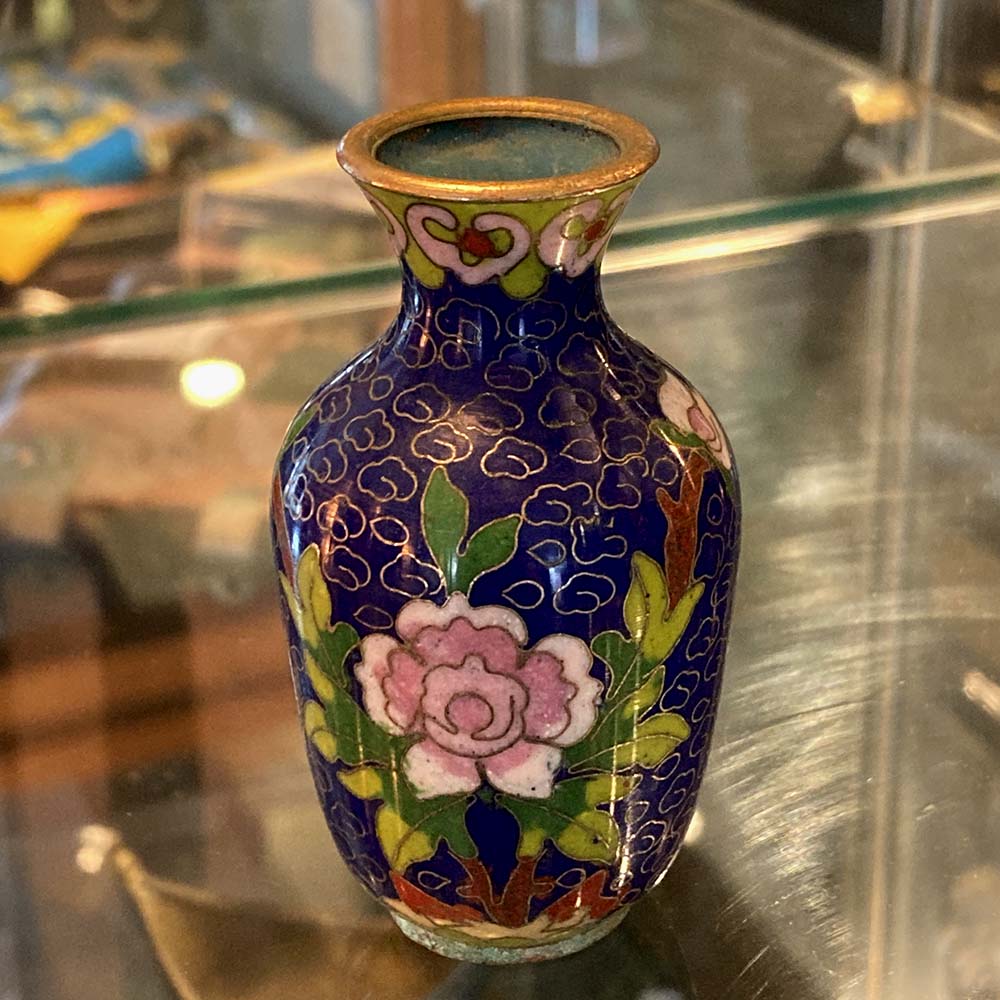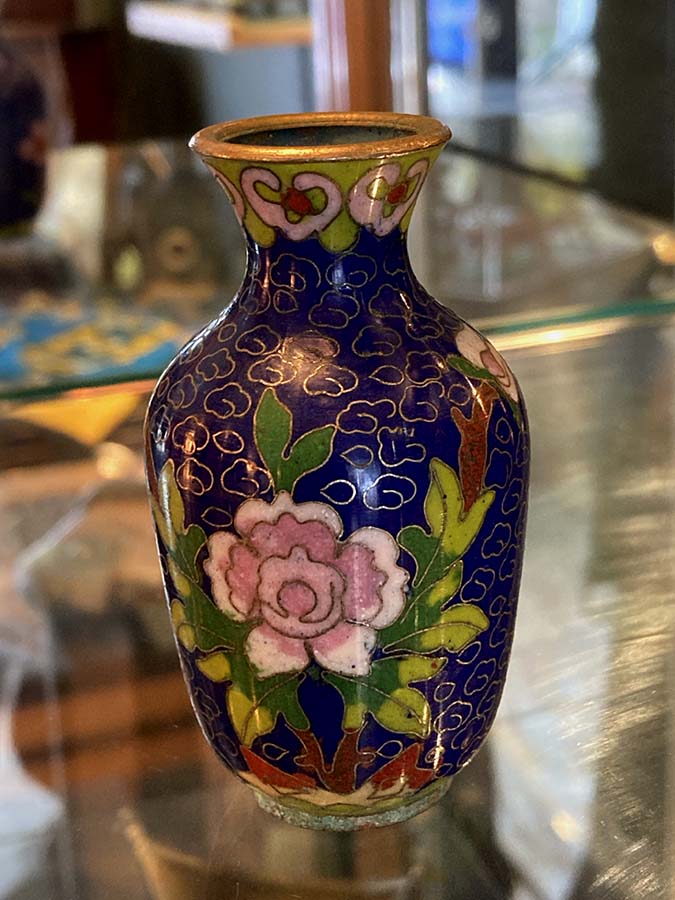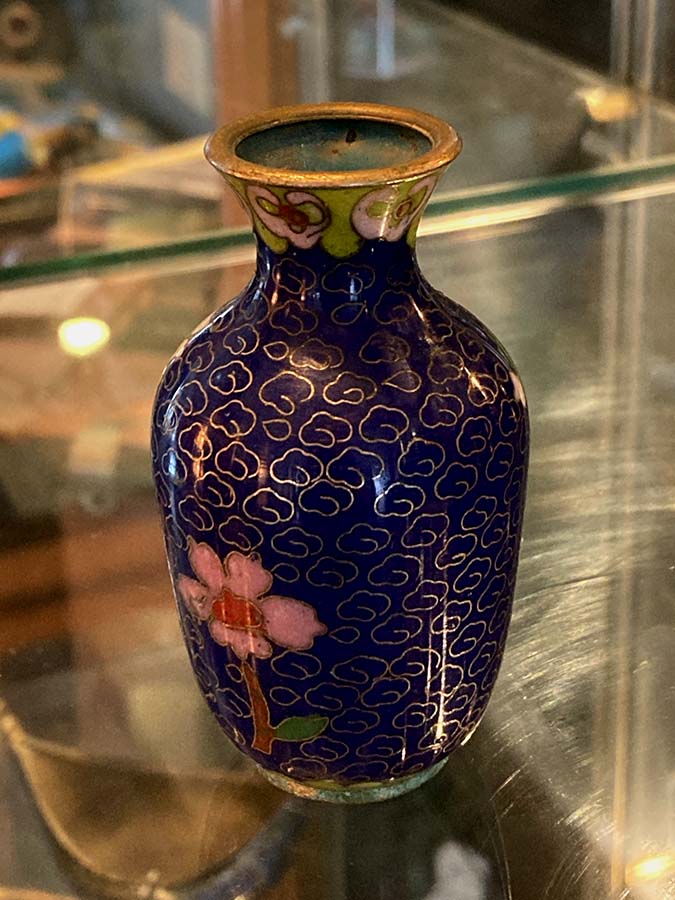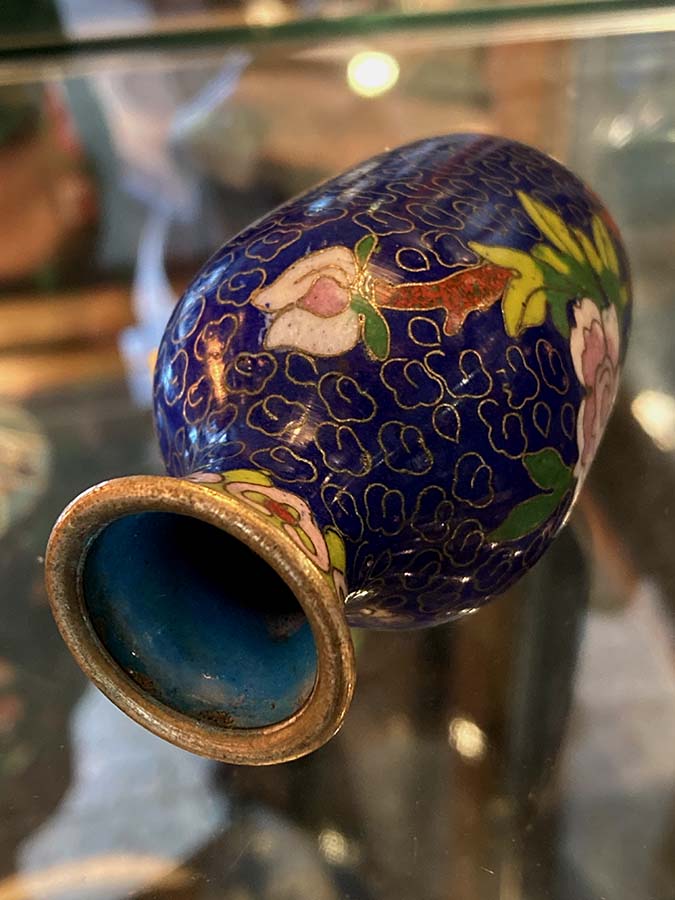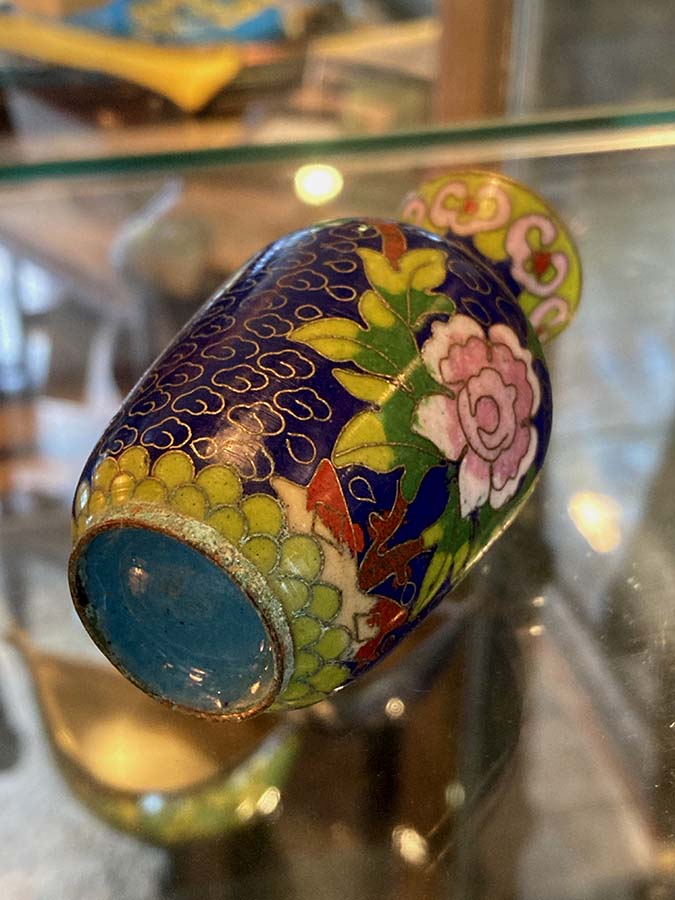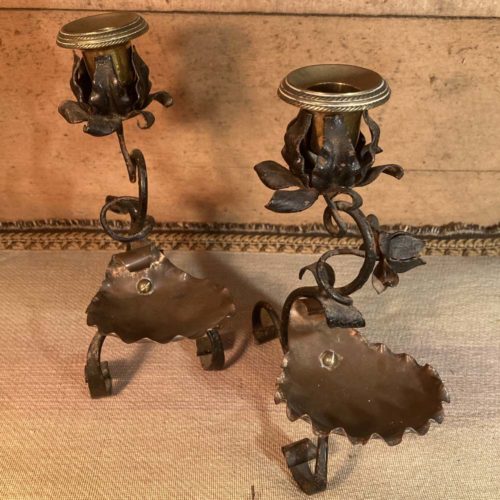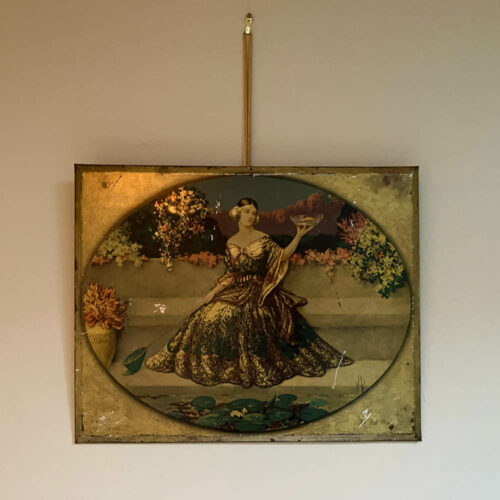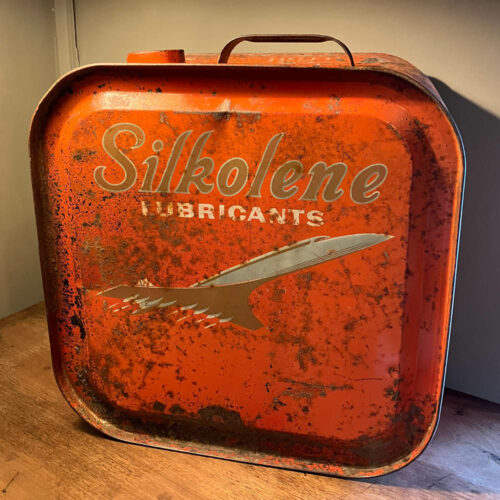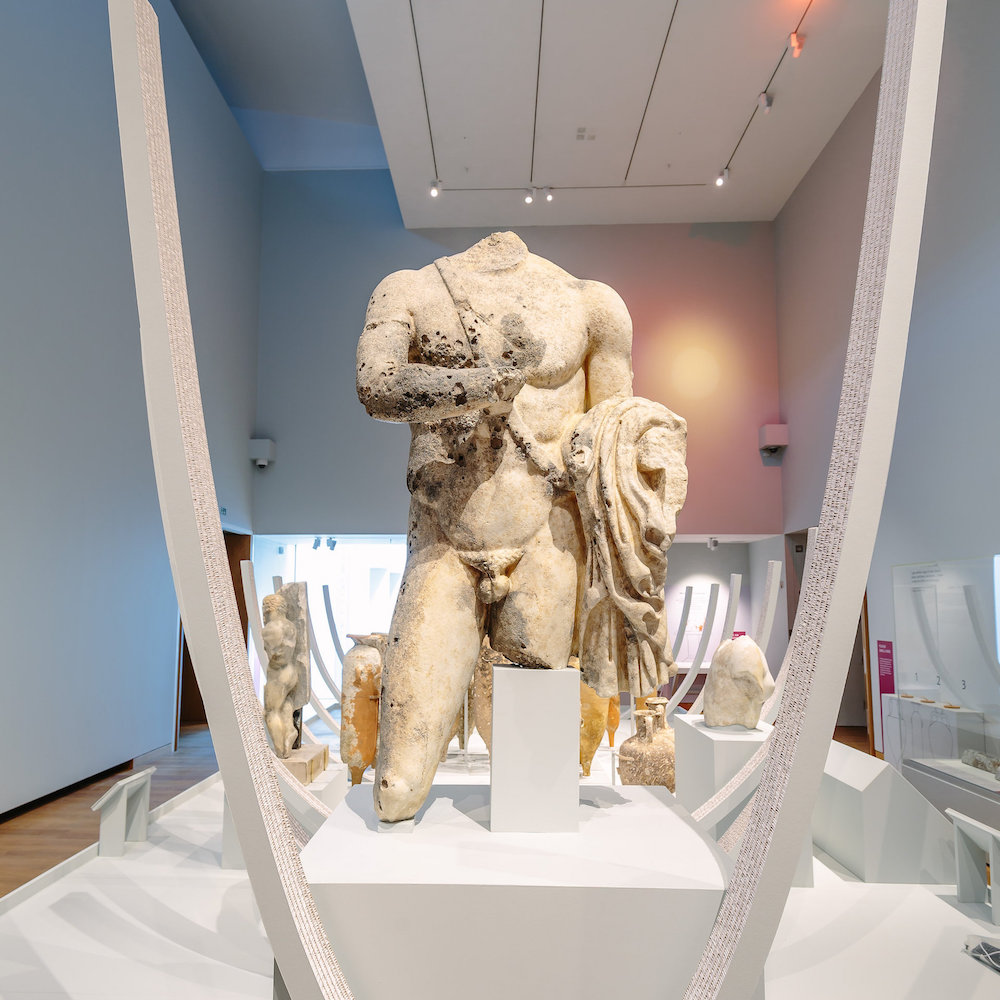This vintage Chinese Cloisonne vase probably dates from the 1980s. It is on blue enamel ground with floral decoration.
Chinese cloisonne vase
£20.00
1 in stock
1 in stock
Description
This Chinese Cloisonne vase is in great condition for it’s age with expected minor signs of wear. There are no cracks or chips.
Background Reading- understanding more about this Chinese cloisonne vase
Production Techniques/Methods:
Cloisonné is an ancient production method (and what has become a name for the object itself) for decorating metalwork objects with coloured material held in place or separated by metal strips or wire. In more recent times, enamel containing quartz (known as vitreous) has been used. Inlaying with enamel was easier than the original materials used like gemstones and glass cut to shape.
The decoration is formed by first creating sections for the metal object by applying silver or gold as wires or thin strips to form edges. These become a decorative feature of the finished piece. ‘Cloison’ means a partition or division. Each section is then carefully filled with enamel powder made into a paste.
In ancient times, the cloisonné technique was mostly used for jewellery and other small items of adornment. Weapons were decorated with geometric patterns. In antiquity the cloison walls were fairly wide. The Byzantine Empire saw methods using thinner strips which enabled more pictorial images to be produced in enamel. In Europe in the 14th century the enamel technique had been replaced by champlevé which involved hollowing into a metal surface as appose to creating wired sections. This spread to China where much larger pieces could be produced, namely vases and bowls. Chinese-derived styles were made in the 18th century in the West and cloisonné objects remain popular in China and are still being made today.
Further information can be found on the Ashmolean website.
Additional information
| Dimensions | 8 cm |
|---|

